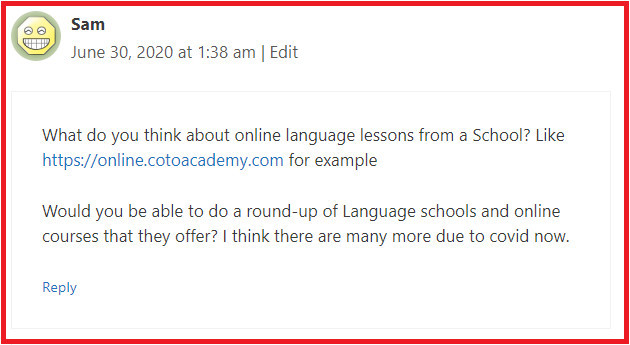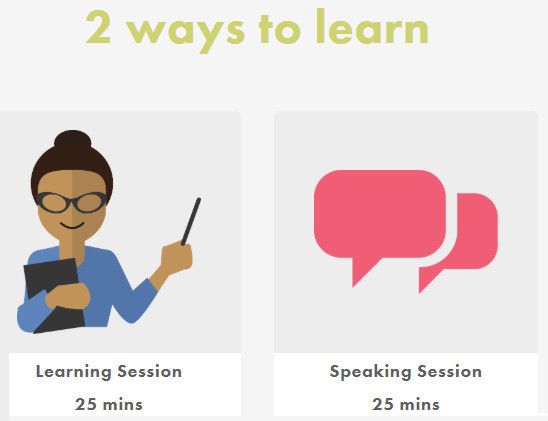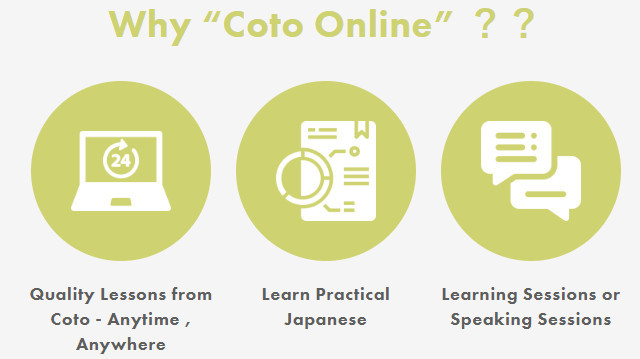I’ve talked a lot on this site about different Japanese books and online courses that are available for students to use in order to improve their Japanese language abilities. Something I haven’t really touched on before is Japanese language learning schools. Today I’d like to change that by sharing my Coto Japanese Academy review.
What I would like to do is share with you who they are and what they do specifically. After that I’ll talk about my thoughts about them and some of the things that I think they do really well.
Finally, I’ll wrap the entire review up with my thoughts and some recommendations on whether I feel they are a good resource for people to use or not. Let’s begin!
How I Learned About Coto
First of all, let me give a huge shout-out to Sam who brought this company to my attention with a comment the other day on my Best Online Japanese Courses post where I give my thoughts and experiences on some of the courses that have helped me improve my own Japanese.

I thought that this was a fantastic idea since it’s an area that I haven’t really explored before, but one that a lot of people are taking advantage of right now.
Especially in the current global environment where a lot of us are stuck at home, or just really cautious about going to areas with a lot of other people in a confined area… like say… a typical classroom!
At any rate, it will definitely take me a little bit of time and a lot of research to create Sam’s request of a language learning school round-up (fantastic idea, by the way) but I definitely wanted to check out Coto since he recommended it and start there.
So what is it all about?
Who (Or What) Is Coto Academy?
The name says a lot about who they are: Coto Japanese Language Academy.
Something that should be pointed out is that they are not a “course” but rather a school that helps people to learn Japanese. In particular, they focus on providing people with an easy & effective way to learn to speak Japanese.
One of the primary ways that they do this is through their interactive online language classes with experienced, native speaking Japanese teachers.
I think that this is pretty great since you get to talk with natives in Japanese and learn the language, but let’s take a deeper look at how their method and system works.
How Does It Work?
The first thing you do is to go to their website and sign up for a free account. One thing that made me laugh was that during this process they ask for your Skype name.
I hate Skype! Lol!
It took me a little while to reset my password and log back in so that I could find out what my account name was and then enter it into my Coto profile.
After that, there is a quick survey that assess your level in Japanese. It will ask you things such as:
- How long have you studied Japanese?
- What is your speaking ability?
- How many kanji can you read?
And after that it asks you what you are wanting to learn during your lessons. Things like becoming a better speaker, improving your listening comprehension, and so on.
After that, you’re in baby! Now we get to the heart and soul of this academy.
What Type Of Lessons Do They Have?

Here is the main thing about Coto Academy: You get 1-on-1 lessons with native Japanese teachers.
That being said, they come in two different forms:
- Learning Sessions
- Speaking Sessions
The first kind of session, Learning Sessions, is why you fill out the initial assessment form during account creation. That way, you can get “A professional Japanese lesson with a teacher and hand-picked materials” that is appropriate for your current abilities.
What is really cool about this is that you can discuss with your teacher what kind of lessons that you would like to have.
Are you looking to become a better conversationalist? Do you want to learn business vocabulary? Or is there something else that you want help with?
What you are basically doing is hiring a personal Japanese tutor.
Even though the overall theme of the lessons is your choice, the specific materials are developed and selected by your teacher and the people at Coto Academy who have helped many other people before you.
You can be as general as, “I want to become a good conversational speaker” and let the teacher determine the best way to bring you to that level.
Or you could be more specific like saying, “I have gone through the Genki books and would like to continue from there” and they will be able to give you lessons appropriate for your level since they know what your abilities are after completed those books.
The second kind of session, Speaking Sessions, is where you “use what you have already learned to practice having more natural and fluent interactions in Japanese.”
This is where you take your Japanese abilities from just a “knowledge” perspective, to a more “practical” one where you get real life practice using what you know.
In my opinion, it’s actually a pretty great resource since you can gain confidence speaking (a huge barrier for most learners) in a safe environment that is entirely focused on helping you improve.
This is also one of the key advantages of learning Japanese through a language school instead of an online course, since it is entirely unscripted and you can learn to have normal and natural conversations with Japanese people.
My Thoughts On Them
To give you just a quick summary of my personal opinion on Coto, I think they are great!
Learning Japanese through these types of language schools has been a tried and true method for thousands of students over the years (actually, one of my cousins became fluent in Japanese back in the 80s through one!) so the method works.
What you have to keep in mind is where you are at currently with your Japanese abilities and what you are trying to accomplish as your next steps.
To help show what I mean, take a look at their introduction video below:
First of all, I realize that this is an introduction to their physical school located in Japan itself, which isn’t really applicable in the current reality of our world.
But that being said, the philosophy and the teachers are the same.
What Coto aims to do is to help you become a good speaker in Japanese.
This is done through both a classroom setting where you learn new words and phrases, but also (and perhaps more powerfully) though the conversations that you have in Japanese with your instructor.
The focus in on helping you to become a confident speaker in Japanese and to learn and understand a lot of practical (commonly used) words and phrases so that you can live and operate in Japan using only Japanese.
I guess what I’m trying to say here is that they are an absolutely fantastic resource for what they do, but it’s really up to you personally to determine if that’s the direction that you want to take right now or not.
For example, if you don’t live in Japan and your interest is primarily in consuming Japanese materials like manga and anime, then this isn’t really the right fit for you.
On the other hand, if you plan on living and/or working in Japan in the future, then this could actually be exactly what you are looking for.
What Level Should You Be At?
I’m going to give you a little disclaimer here and say that this next part is entirely my own opinion.
I think that Coto would be a great fit for you if you are already at the high-beginner to intermediate level with Japanese.
The reason why I say this is because if you are totally new to the language, then you really just need to learn the basics which you can learn from just about any book or course.
The information doesn’t really change all that much and it will be a lot cheaper to start off this way (buying a good beginner book on Japanese) rather than spending the higher price for private lessons.
The way that Coto is set up is that you purchase some points (the trial package is 8 points for ¥5,000 which is roughly $50) and then you can spend 2 points for a curated lesson, or 1 point for a speaking lesson.
Since the lessons are 25 minutes each, you are spending about $12.50 per personalized lesson which can add up quickly when you are just getting started.
The thing you have to remember is that the Japanese teachers are all professionals that have been trained to help students learn quickly, so it makes sense that they would be paid a fair salary for their work.
I guess what I’m saying is that you personally (as a student) will get the most bang for your buck if you can start taking these lessons when you already have a solid base of the language established and can focus more on becoming a better speaker rather than learning basic words and phrases.
Where Can You Try Them Out For Yourself?
You know, when I write these kinds of reviews I can really only give you my own personal opinion on them. I always try to be as objective as possible, but the truth is that your personal experience and opinion will ultimately trumph my own.
If they sound like a good fit for what you are looking for, then try them out! And if not, then don’t worry about it.
Like I mentioned before on this site, I personally love anything or anyone who is actively working to help other people learn the Japanese language and culture because it is such a passion of mine.
I think that Coto can be an absolutely fantastic resource to use, but you have to make sure that it is the right fit for you personally based on your own goals and level with the language.
If you want to learn more about them, then you can check them out on their main website at online.cotoacademy.com.
Something else that you can do is check out some of their YouTube videos to get more familiar with them.
If you have any questions or comments that you would like to make about Coto Academy, then please do so by making a comment in the section below. Thanks!
Further Resources for Learning Japanese:
#3 Get My eBook (Secrets to Learning Japanese) for Free

またね!

Many thanks for your review. My wife, who is Japanese, and I moved to Japan just over 3 weeks ago and after some research, I concluded Coto might be the best school for me but I won’t really know until after the initial interview and assessment. Wish me luck!
Good luck Chris! I hope you do well and enjoy it!